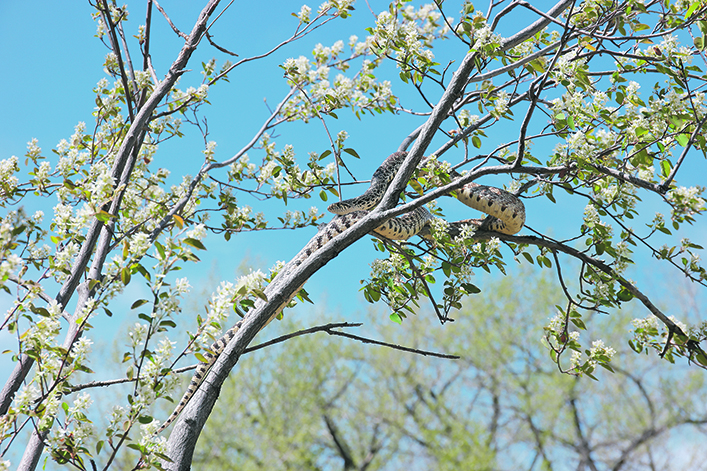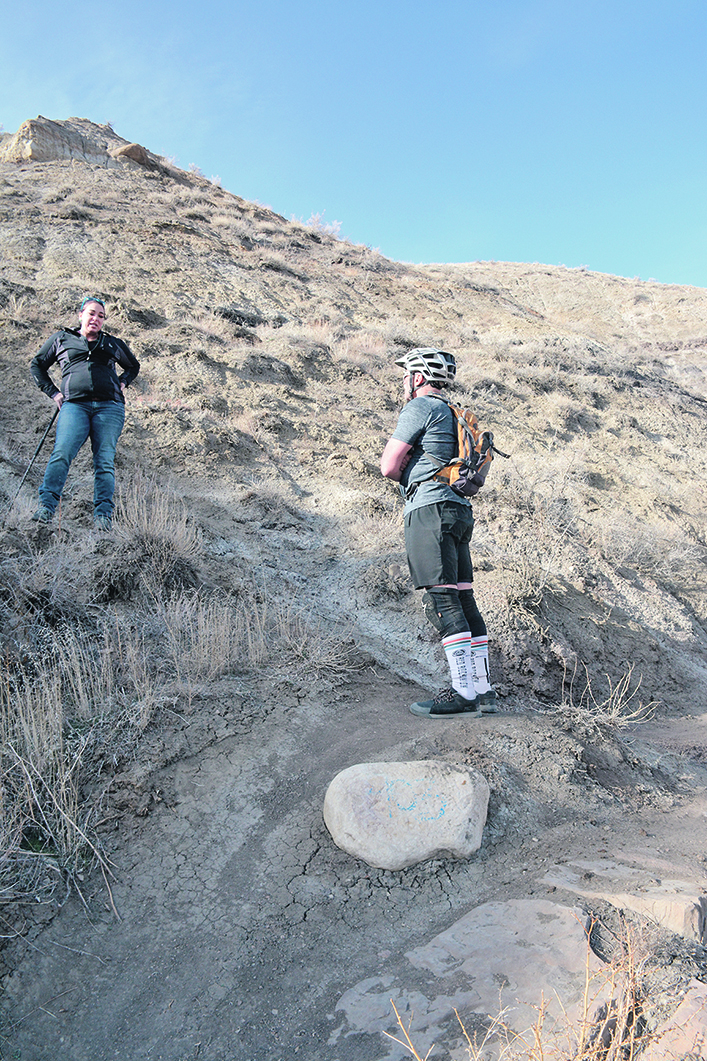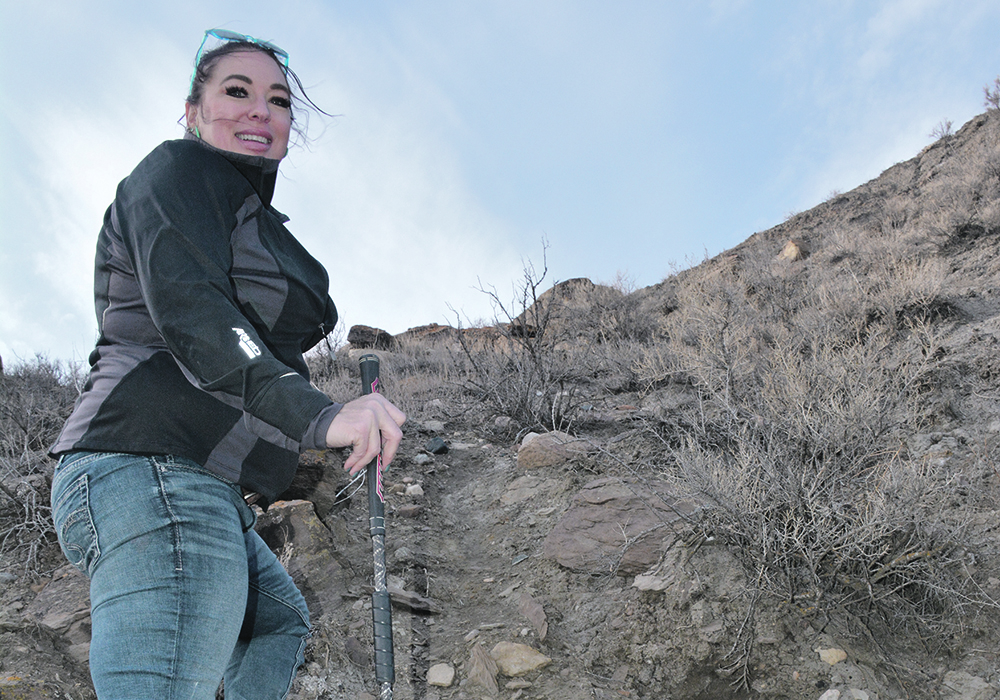The snakes are under pressure from human development, but advocates make the case for their continuing survival
Love them or hate them, snakes across southern Saskatchewan and Alberta are a reality. Some are potentially dangerous to humans, but they also form part of the vitality of the prairie ecosystem.
Sheri Monk is definitely in the love-them category, having moved to Redcliff, Alta., from Winnipeg to be able to study them, help educate the public and offer removal of potential problem snakes through her organization Snakes on a Plain.
Monk said myths about snakes are alive and well, especially when it comes to prairie rattlesnakes.
The rattlesnakes in Alberta and Saskatchewan aren’t the biggest on the continent, but the largest of them, the prairie rattler, can grow to about 1.5 metres long. There are no recorded deaths in Canada caused by a rattler bite in recent memory but they have regularly sent people into intensive care. As well, their venom killed a 31-year-old Colorado hiker in 2017 after being bitten.
Then there is the relationship between the larger bullsnakes with their rattler cousins, which has also led to myths about how they interact.
“One is that bullsnakes will eat rattlesnakes and the other myth is that bullsnakes and rattlesnakes are somehow breeding to create some new sort of hybrid, extra deadly monster,” said Monk.
On the latter myth, Monk highlighted the anatomy of the two species are so different that it would be impossible.
“I hear this myth all the time,” she said, noting that rattlers give birth to live young while bullsnakes produce eggs.
“It would be the same thing as saying that your pig and horse have got together. That would actually be easier for them because at least they develop babies in the same way.”
But Monk said bullsnakes and rattle snakes do den together and inhabit the same areas along the Red Deer and South Saskatchewan river valleys.

Bull and rattlesnakes aren’t the only species found on the Prairies. Several varieties of garter snakes can be found across Alberta and Saskatchewan along with a small population of yellow-bellied racers along the Milk River and the plains hog nose.
But rattlers and bullsnakes offer the most benefits to farmers, said Monk, specifically when it comes to ground squirrels.
“The big advantage of them is they’re able to get underground and raid the nests of babies before they ever grow up to cause more land damage. They can control ground squirrels of all shapes and sizes,” said Monk.
And they can be a far more efficient method of pest control than poison in the long run, she added.
“The larger the animal, the longer it takes the population to bounce back. Strychnine looks really good on the surface by getting rid of a bunch (of ground squirrels) really quick but what you’re doing long term is poisoning predators further up the chain,” said Monk. “So, you are going to have an even worse outbreak the following year.”
But there are constant pressures put on snake habitats, said Monk, adding that often leads to a value negotiation with snakes getting short shrift.
Ranchers on grasslands co-exist with snake populations while cultivated land can pose issues including the heavy use of vehicles on the landscape that can flatten the reptiles.

Urban development can also cause declines in rattlers and bull-snake populations.
Hiking along a new mountain bike trail connecting Redcliff and Medicine Hat, Monk pointed out several snake dens located a few metres from the path and a housing development set to be built on the plateau above the coulee in prime snake feeding grounds.
Aside from the potential of humans being bitten by rattlers, which have already begun to emerge from hibernation this spring, there is a danger of people inadvertently collapsing a den that will lead to their destruction as they habitually return in the fall to the same spot.

Oil and gas development also poses challenges because many workers don’t know how to deal with them.
“Everything has to earn a living,” said Monk. “If we are going to be at all fair and egalitarian, then we also need to extend that courtesy to the animals that maybe we wouldn’t want to break bread with. Everything has a place and purpose and I think most agricultural producers realize that.”
For those unfortunate enough to get bit by a rattler, Monk said take off any jewelry around the bite, do not try to suck out the venom and seek medical attention as soon as possible with health facilities usually well-stocked with anti-venom.
















